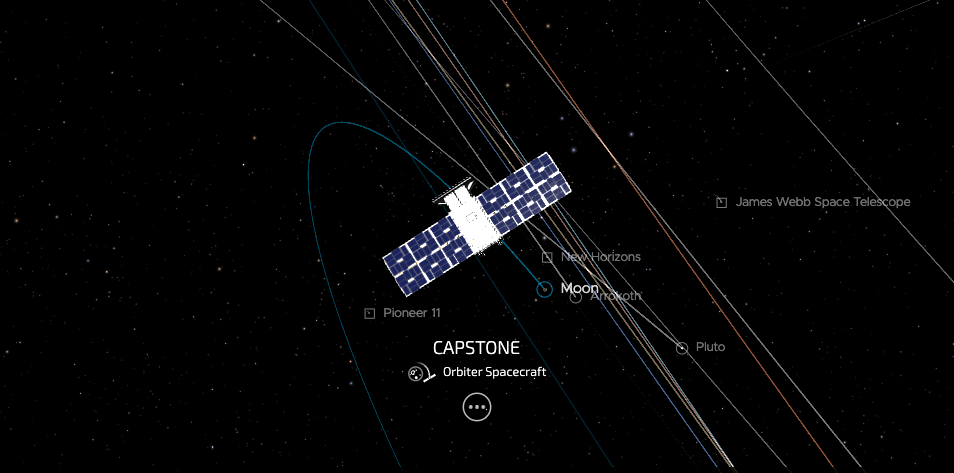
Follow CAPSTONE’s Four-Month Journey to the Moon in Real Time (Image Credit: SNN)
NASA’s microwave oven-sized CubeSat dubbed CAPSTONE is flying solo, blazing an unusual yet efficient deep space route to the Moon. The CubeSat is heading toward an unique orbit intended in the future for Gateway, a lunar space station built by the agency and its commercial and international partners that will support science and human exploration under Artemis.
During the next four months, CAPSTONE – short for the Cislunar Autonomous Positioning System Technology Operations and Navigation Experiment – will rack up serious mileage hurtling through deep space on its traverse from Earth to the Moon. Assisted by the Sun’s gravity, the spacecraft will reach a distance of 958,000 miles from Earth – more than three times the distance between Earth and the Moon – before being pulled back towards the Earth-Moon system.
This sinuous, gravity-driven track – called a ballistic lunar transfer, or BLT – dramatically reduces the amount of fuel the CubeSat needs to get to its target orbit. Rocket Lab’s Photon upper stage released CAPSTONE onto a BLT trajectory to the Moon on July 4. Since then, the CubeSat is using its own propulsion and the Sun’s gravity to navigate to its destination. When CAPSTONE catches up to the Moon on Nov. 13, its approach will be perfectly aligned for lunar orbit insertion.
NASA invites the public to follow CAPSTONE’s journey live. You can virtually ride along with the CubeSat with a simulated view of our solar system using NASA’s Eyes on the Solar System interactive real-time 3D data visualization – a digital model of the solar system. This simulated view of our solar system runs on real data. The positions of the planets, moons, and spacecraft – including CAPSTONE – are shown where they are right now.
Learn more:
- What is CAPSTONE?
- NASA’s Eyes Software Resources
- NASA’s Eyes Solar System Interactive Real Time 3D Data Visualization
For news media:
Members of the news media interested in covering this topic should reach out to the NASA Ames newsroom.
CAPSTONE is commercially owned and operated by Advanced Space in Westminster, Colorado. It represents an innovative collaboration between NASA and industry to provide rapid results and feedback to inform future exploration and science missions.
The CubeSat was designed and built by Terran Orbital Corporation. CAPSTONE includes contributions from Stellar Exploration, Inc., Space Dynamics Lab, Tethers Unlimited, Inc., and Orion Space Systems.
NASA’s Small Spacecraft Technology program within the agency’s Space Technology Mission Directorate (STMD) funds the demonstration mission. The program is based at NASA’s Ames Research Center in California’s Silicon Valley. The development of CAPSTONE’s navigation technology is supported by NASA’s Small Business Innovation Research and Small Business Technology Transfer (SBIR/STTR) program, also within STMD.
The Artemis Campaign Development Division within NASA’s Exploration Systems Development Mission Directorate funds the launch and supports mission operations. The Launch Services Program at NASA’s Kennedy Space Center in Florida manages the launch service. NASA’s Jet Propulsion Laboratory supports the communication, tracking, and telemetry downlink via NASA’s Deep Space Network, Iris radio design, and groundbreaking 1-way navigation algorithms.
Last Updated: Jul 8, 2022
Editor: Frank Tavares





